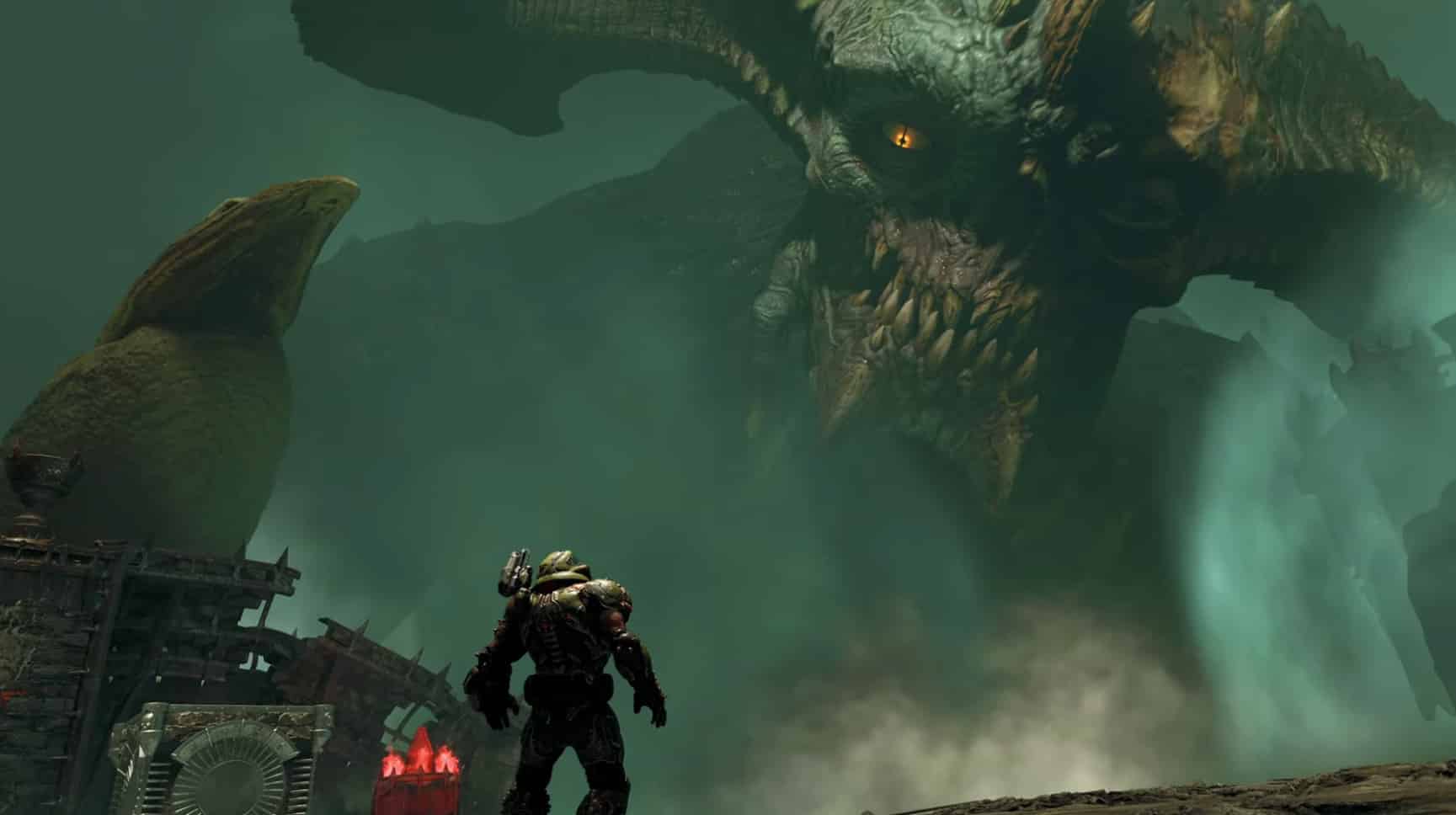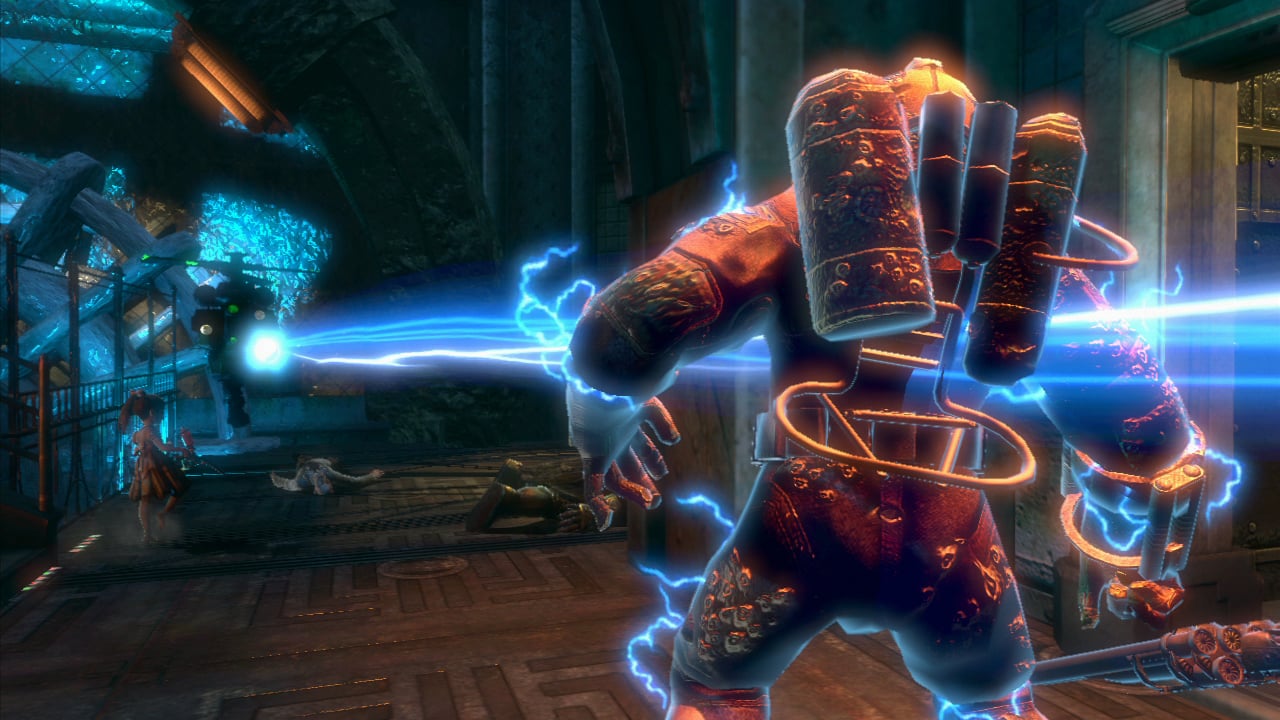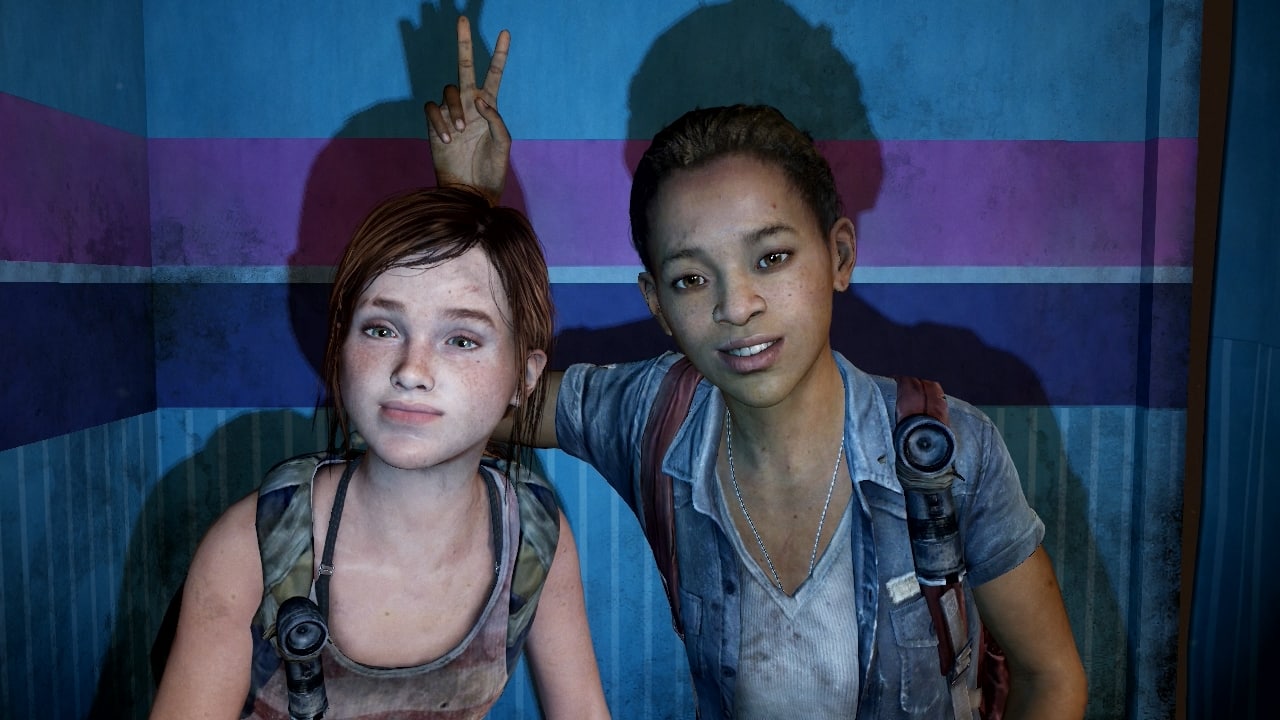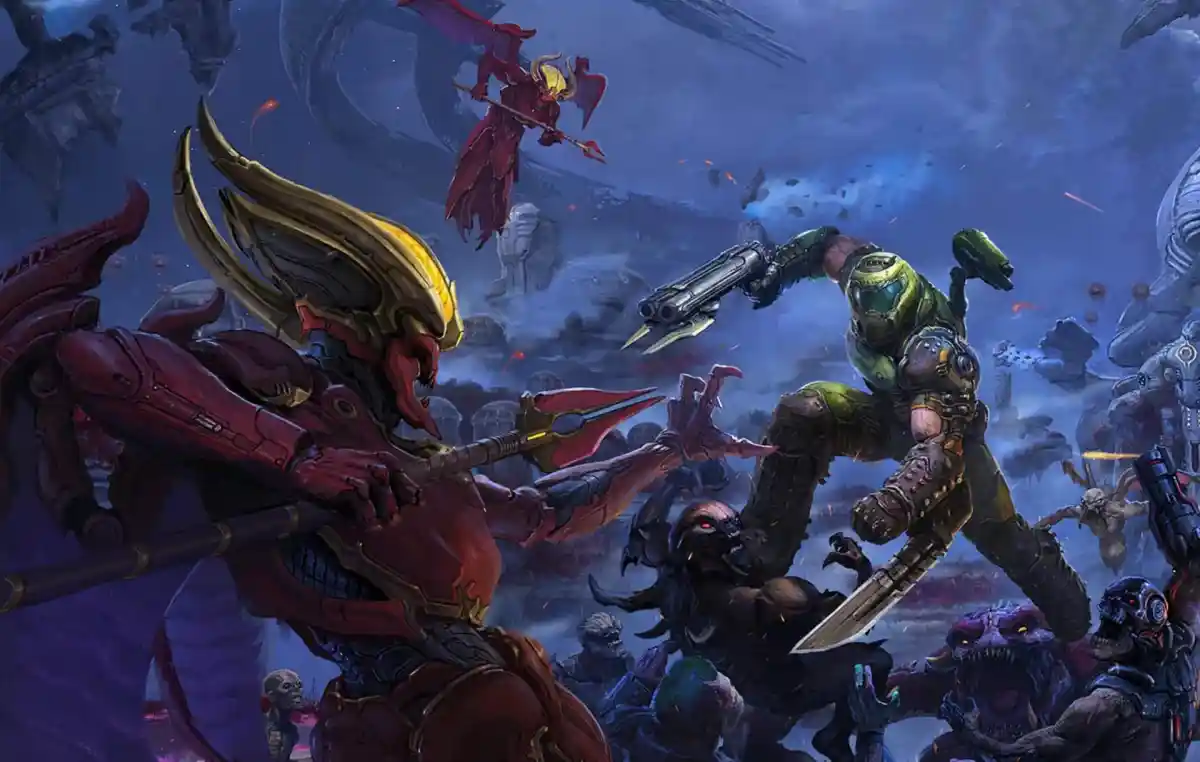After blasting through The Ancient Gods, Part One DLC for Doom Eternal, I was left with a bit of an existential crisis. Not because of the gameplay, which is an action-packed five hours that picks up the baton from right where the game left off. And not because it made me realize that Doom Eternal came out just seven months ago during this never-ending hellmouth of a year. No, the reason I was left with an existential crisis was because despite enjoying my time with The Ancient Gods, I was left wondering not only what it is that I want from DLC, but also just what DLC even is in 2020.
On one hand, The Ancient Ones is simply more Doom Eternal. Its difficulty picks up right where the core game ended, meaning that anyone who hasn’t played it since launch will probably be dying a whole hell of a lot while regaining their sea legs. But after a bit of recombobulation, I found myself back up to speed with the Doom Slayer, finding my old rhythm of rotating through my arsenal as I surveyed all the demons who were trying to kill me in each combat arena. I was micromanaging my flame belches, melee attacks, and chainsaw kills in order to keep my health, armor, and ammunition topped up. And I was back in the groove of navigating levels laid out like spaghetti bowls filled with winding tunnels, cavernous combat arenas, secret nooks, and platforming challenges.
The three locations of the story missions are aesthetically neat, with an oil refinery that’s destroyed and sinks throughout the mission, an old spooky bog, and a colorful realm that looks like it’s pulled out of a Destiny raid. You just bounce from one map to the next without visiting the Fortress of Doom, Eternal’s excellent hub world, which is a bit of a bummer. And the levels that are here tend to lean a bit too heavily into the aforementioned platforming challenges, which I’m probably not alone in feeling like are the weakest segments of Doom Eternal.

As the DLC picks up following the main campaign, you’re forced to go against various combinations pulled from the entire horde of enemies right from the get-go, including Maykr Drones, Cyberdemons, and everyone’s favorite Marauders. Working out the order and manner in which you’re going to handle these creatures in each encounter is still a blast this time around. But while there are a few new enemy types like sentient turrets, they tend to force you to slow your pace down, which ultimately disrupts the core flow of Doom’s fast-paced gameplay loop. And the fact that they aren’t complemented by new weapons for us to play with is definitely a disappointment.
In a bit of a double-edged sword, the DLC’s high point comes right at the end. Without spoiling it, a reveal in the final moments has me genuinely excited for what comes next both in terms of story as well as gameplay, which will undoubtedly be the focus of Part Two next year. In short, The Ancient Gods: Part One feels like a standalone trio of missions that deliver predominantly more of the same great game from earlier this spring. But that got me thinking what exactly it is that I’m looking for when it comes to DLC in games.
In a world where games take months, if not years to find their groove, and are oftentimes updated on a fairly regular basis — think Destiny, Sea of Thieves, Warframe, and perhaps Marvel’s Avengers down the road — the term DLC itself feels like an outdated insult from Oblivion’s infamous horse armor era. Pessimists will say it just means content that publishers and developers cut from the finished game under the guise of making extra money from fans through season passes and microtransactions. Optimists will say it’s a way for developers to take feedback from the players and craft even more great experiences that can surpass the original game. And realists will say it’s a good way to keep the lights on in an industry where that’s becoming increasingly hard to do.

Regardless of your moral stance on post-release content, I started thinking about some of my favorite DLC/expansions from throughout the past decade or so and what they might have in common. The first that came to mind was Minerva’s Den, a 2010 DLC for BioShock 2 that told its own unique, self-contained, reflective story that focused on loss, remorse, and humanity. It was led by a team at 2K Marin that included Steve Gaynor, Karla Zimonja, and Johnnemann Nordhagen, who would all go on to form The Fullbright Company and create 2013’s wonderful Gone Home, so it’s easy to see why Minerva’s Den had such personal themes. It also added an array of new weapons, shuffled the order in which you obtained your Plasmids, and introduced new enemies that flipped nearly every combat encounter on its head.
The original Red Dead Redemption’s Undead Nightmare in 2010 took Rockstar’s beloved take on the western and mashed it with zombie horror to create a fantastic genre hybrid. Set in an alternate timeline of the original game, it had you playing as John Marston in search of the cause and cure of a zombie-like plague that’s infected his family. It introduced survivor settlements, mythical beasts, and more of an action focus in the open-world gameplay. I’d love to see more games experiment with completely different genres and deliver non-canonical stories in the same way that Undead Nightmare did.
On the opposite end of the spectrum was The Last of Us: Left Behind, a downloadable expansion story that came in 2014 a year after the release of the original game. Its framing takes place in the middle of the core game, with a majority of the gameplay existing as flashbacks to Ellie’s time before she met Joel. The fantastic mall setting, the incredible relationship between Ellie and Riley, and discovering just how the incoming tragedy was going to unfold made for a thoroughly compelling story that also served as a kind of bridge between the two TLOU games, even if we didn’t know it at the time.

Finally, we have The Old Hunters, which expands the already fantastic Bloodborne with new settings, weapons, NPCs, bosses, and, most importantly, that sweet, sweet lore. Set in the dangerous Hunter’s Nightmare, it’s a challenge that trumps anything seen in the core game before it, and it arms you with new weapons ranging from the bizarre Whirligig Saw to the Moonlight Sword, a fantastic throwback to FromSoftware’s past. Five years later, it’s hard to imagine Bloodborne without The Old Hunters.
Quality is in the eye of the beholder, and what I’d consider to be a fantastic experience might not be the same as what you would. But the thing these four expansions all have in common is that they fully build upon and recontextualize the excellent worlds of their core games. They also all add a bunch of new and interesting mechanics that add to their familiar bases, which Doom Eternal: The Ancient Gods DLC kind of fails to do at this halfway point. While more of a good thing isn’t bad, it takes more than that to truly stand out as a memorable piece of game design.






Published: Oct 27, 2020 11:00 am